Original URL: https://www.theregister.com/2013/05/21/reentry_tech/
Space dogs and Dragons: A brief history of reentry tech
How a flying Frenchman paved the way for space exploration
Posted in Science, 21st May 2013 10:04 GMT
In August 1960, Soviet dogs Belka and Strelka1 - accompanied by several mice - became the first animals to travel into space and return alive.
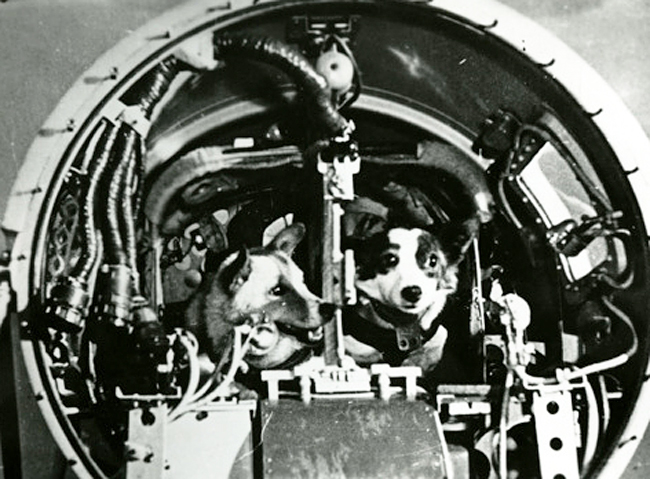
Belka and Strelka seen inside the Vostok capsule
Packed into their Vostok spacecraft, the space canines relied on some venerable technology to return to terra firma - technology which is still today ensuring a survivable, if not always soft, landing.
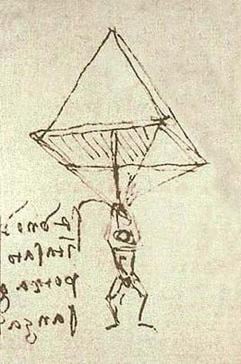
Right lads, we'll just tie a
capsule to that and we're away
The concept of the modern parachute first pops up in Renaissance Europe, with Leonardo da Vinci's famous sketch of c.1485 showing just how a man might float to Earth without doing himself some serious damage.
It wasn't until 1783 that Frenchman Louis-Sébastien Lenormand jumped from the tower of Montpellier observatory and lived both to tell the tale and invent the word "parachute".
It was thanks to the pioneering Lenormand, and continuous improvements to the parachute over the next 180 years, that Belka and Strelka walked away from their post-reentry fall from the skies, and paved the way for Yuri Gagarin's historic 1961 flight.
The Vostok capsule was basically a sphere covered in ablative heat shielding. The Soviets rejected the idea of a "conical" design (see Mercury, below) because that would require "an elaborate attitude control system" to keep the shielded blunt end of the cone facing Earth's atmosphere during reentry.2
Instead, scientists configured the Vostok's centre of gravity so the capsule would some have degree of predicable attitude. This was essential for manned missions because, amid concerns about the Vostok's landing velocity (for humans at least), even when slowed by its own parachute, it was decided that cosmonauts would be ejected from the capsule at some 7,000m to float independently groundwards.
Fortunately for Gagarin, his Vostok 3KA-3 was in the right orientation when the hatch was blown off explosively and he was projected into the atmosphere.
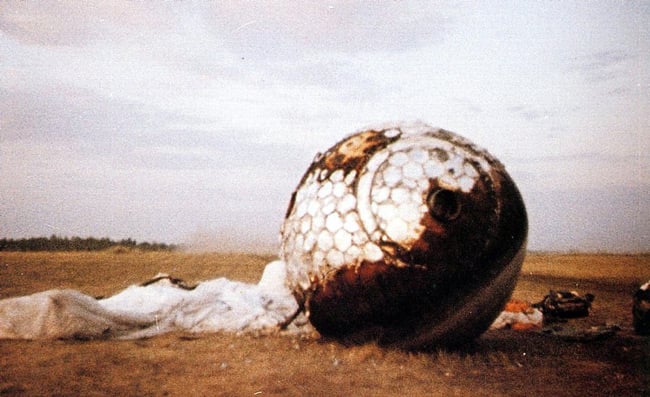
Gagarin's Vostok 3KA-3 capsule
Just one month after Gagarin's flight, Alan Shepard became the first American in space with the suborbital flight of his Freedom 7 Mercury capsule. The mission demonstrated two marked differences to the Soviet approach: the use of a truncated cone capsule; and a preference for splashdown over hitting the ground with a bump.
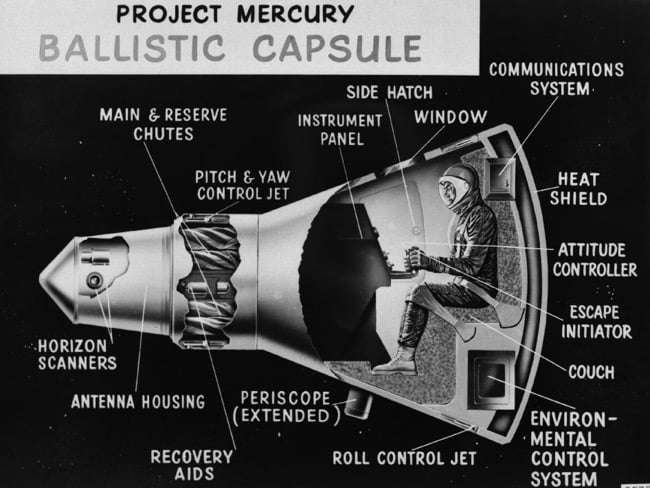
1959 cutaway illustration of the Mercury capsule. Pic: NASA
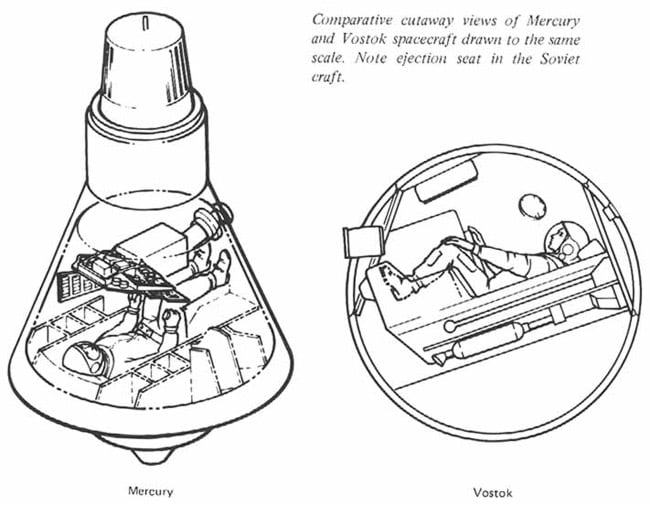
A tight squeeze: The Mercury and Vostok capsules. Pic: NASA
For the US, the vast Pacific off its western coast, and its long Atlantic seaboard, coupled to a sizeable Navy fleet including aircraft carriers, made the ocean a perfect landing site. The Soviets, lacking both carriers and suitable neighbouring stretches of sea, opted instead for the spacious land interior of their empire.
Mercury featured an inflatable landing-bag system situated behind the heat shield, which deployed just before splashdown to absorb some of the force as the capsule came down vertically. It also had additional bags to keep the vehicle upright in the water.
Nonetheless, a couple of months after Shepard hit the heights, the US splashdown policy almost cost Liberty Bell 7 pilot Gus Grissom his life. Following a 15-minute suborbital flight and descent, the capsule's hatch blew off unexpectedly, obliging the astronaut to make a quick exit.
Grissom almost drowned as his spacesuit filled with water, and the Liberty Bell 7 sank to the bottom of the briny.
Near misses aside, the Mercury's conical capsule, with its ablative heat shielding on the blunt end, facing the direction of reentry, proved an effective design.
Mercury evolved into the two-man Gemini, which in 1965-66 allowed ten manned missions as a prelude to Apollo. NASA scrubbed the Mercury landing-bag system in favour of a more horizontal splashdown orientation of the capsule...

Gemini 10 splashdown on 21 July 1966. Pic: NASA
...although flotation bags were still required:
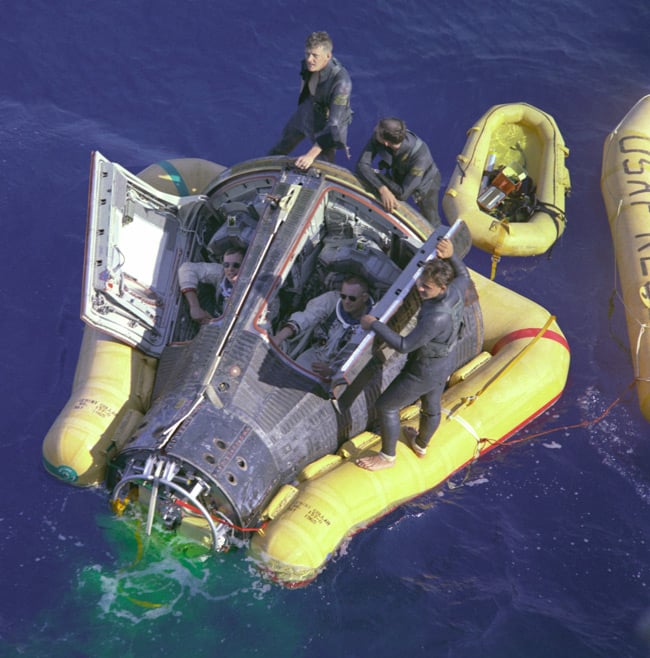
Neil Armstrong and David Scott await recovery after the 1966 Gemini 8 mission. Pic: NASA
We're going to need a bigger 'chute
Having honed its oceanic recovery skills, the US was ready to pitch for the Moon with Apollo. Work on the Apollo command module actually began in 1961 - before Gemini - but its "Earth landing system" (ELS) required some extra parachute power to support the capsule's greater weight.
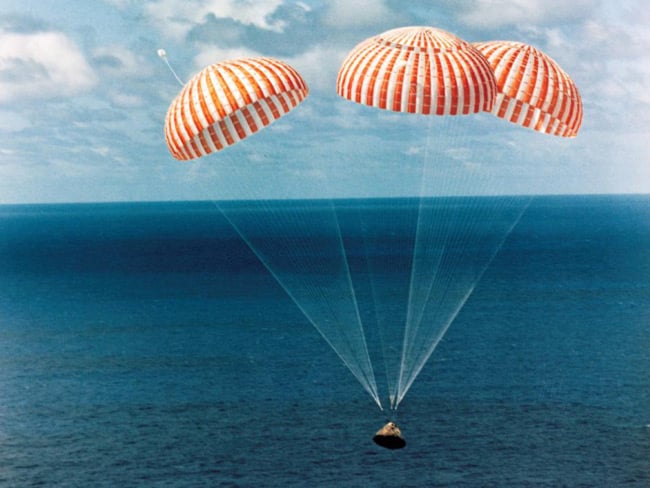
The Apollo 14 command module splashes down on 9 February, 1971
Following reentry, the command module's forward heat shield was jettisoned at an altitude of 7,000m. Drogue 'chutes then slowed it to around 200km/h, until at 3,300m they too were jettisoned and three pilot parachutes pulled out the mains, before splashdown at 35km/h.
Crushable ribs at the first point of capsule contact with the water absorbed some of the impact energy, after which the presumably largely unrattled crew awaited recovery.
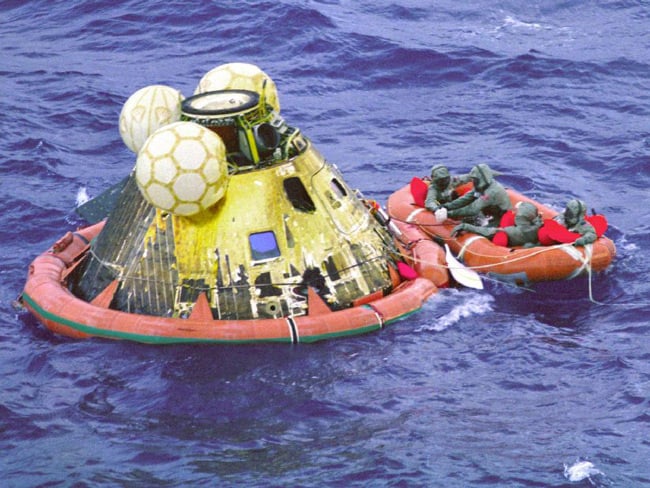
The Apollo 11 command module after splashdown in 1969. Pic: NASA
The USSR, meanwhile, had it own lunar ambitions, which ultimately resulted in the highly successful Soyuz spacecraft. Before Soyuz rose from the drawing board, the Voskhod programme deployed a Vostok descent module with the added luxury of solid-fuel braking rocket strapped to the capsule's parachute lines.
Having ditched the Vostok's original cosmonaut ejector seat, this cushioning was essential for ground landings. The Soyuz capsule - a hemisphere atop a barely-angled conical body sitting on a convex heat shield - uses three solid-fuel braking engines which fire just above the ground to do the same job.
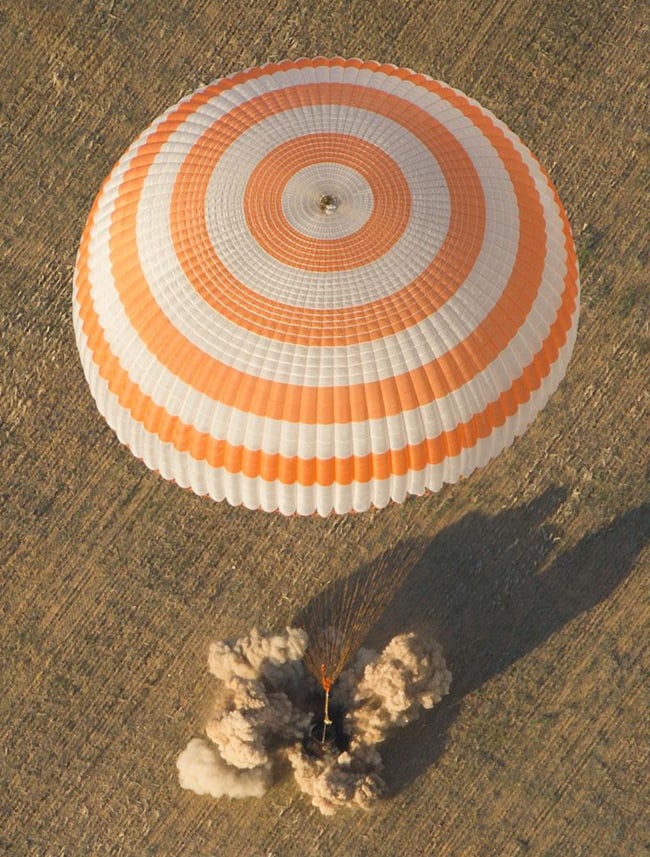
Soyuz TMA-04M touches down on 17 September, 2012. Pic: NASA/Carla Cioffi
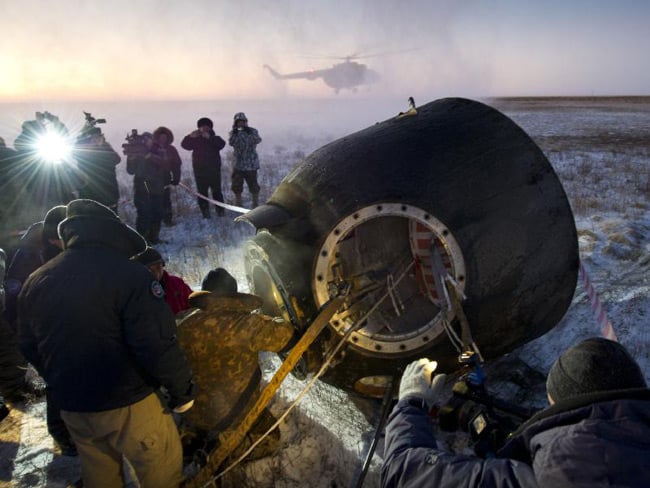
Soyuz TMA-02M after touchdown in Kazakhstan in 2011. Pic: NASA/Bill Ingalls
The capsule has shown itself to be highly robust, and the basic form is unchanged to this day, but Soyuz's first mission in 1967 ended in disaster with the death of cosmonaut Vladimir Komarov.
Shortly after launch, thing began to go seriously wrong. One of the spacecraft's solar panels failed to unfold, starving the vehicle of power. Breakdown of the automatic stabilisation system and other glitches prompted a mission abort.
Although the spacecraft reentered the atmosphere intact, the main parachute didn't deploy, and Komarov crashed to Earth, becoming the first space flight fatality.3
In 1971, cosmonauts Vladislav Volkov, Georgi Dobrovolski and Viktor Patsayev were killed when their Soyuz 11 capsule depressurised prior to reentry, although recovery crews weren't aware of the fatal accident until the vehicle landed normally in Kazakhstan.
Soyuz has since, however, provided years of reliable service, including servicing the International Space Station.
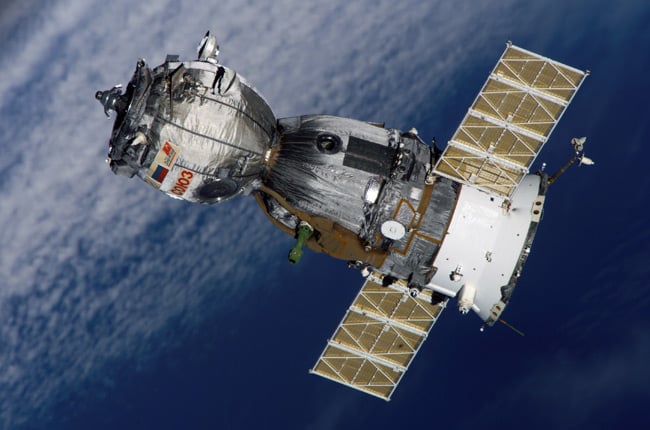
Soyuz TMA-7 as seen from the International Space Station in October 2005. Pic: NASA
China too has benefited from Soyuz tech, with the capsule for its Shenzhou manned missions reportedly an upscaled version of the Russian design, complete with a trio of braking engines to soften the blow.
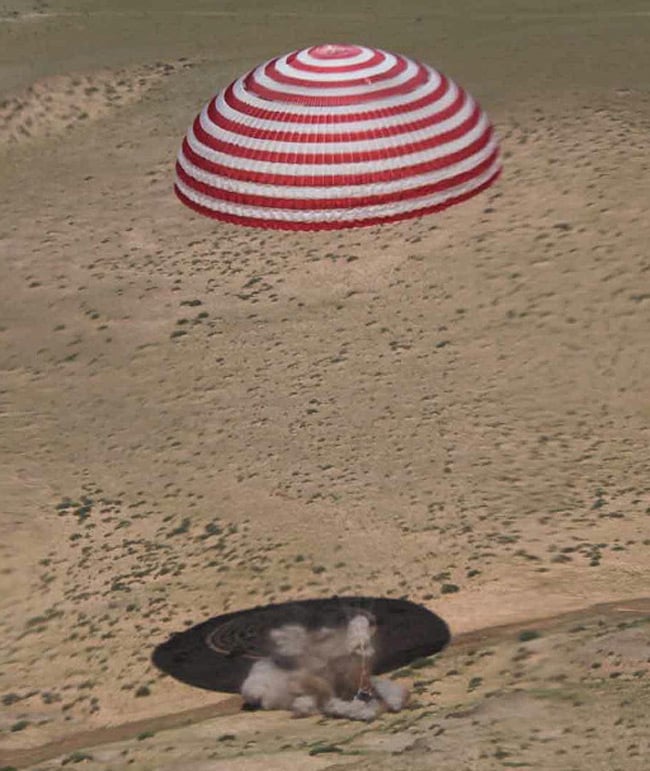
The Shenzou 9 capsule lands in Inner Mongolia on 29 June 2012
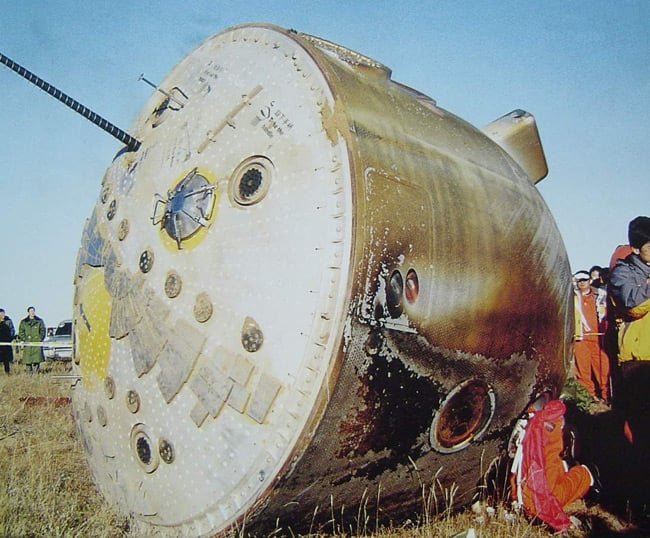
The Shenzhou 5 capsule after landing
Floating Dragons
Evidently, space agencies worldwide look set to keep really big parachute manufacturers busy for some time.4 The private sector is also doing its bit for massive canopy suppliers, with SpaceX's Dragon capsule needing three per launch and the services of a recovery barge.
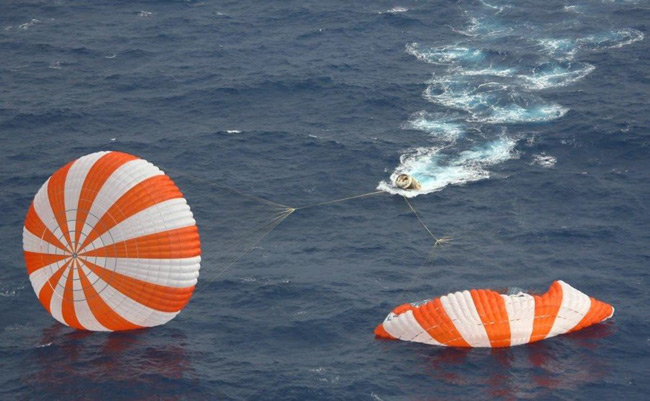
Dragon spacecraft splashes down in the Pacific. Pic: US Navy/NASA
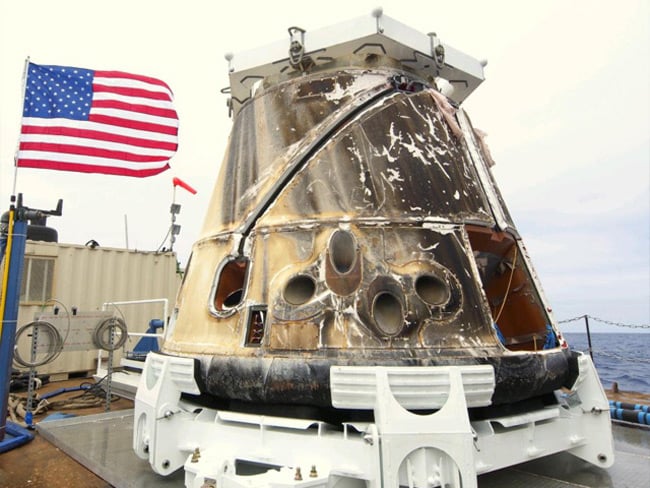
The Dragon after recovery. Photo: SpaceX
The next generation of manned capsules will similarly float elegantly from the heavens. Lockheed Martin's Multi-Purpose Crew Vehicle (MPCV), aka "Orion"...
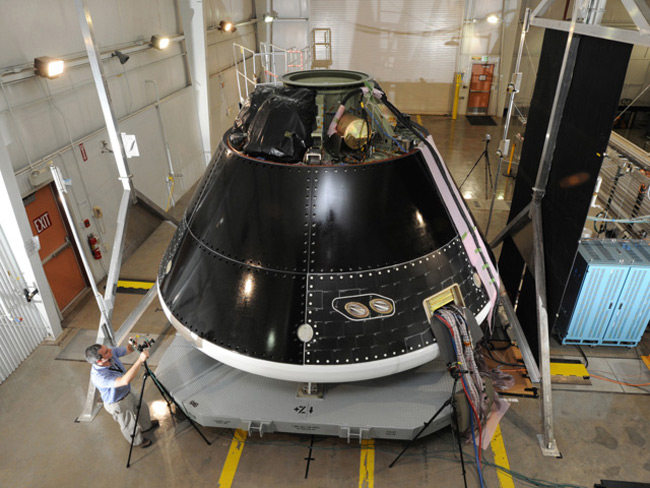
Lockheed Martin's Multi-Purpose Crew Vehicle. Photo: Lockheed Martin
...boasts an Apollo-style three-'chute configuration...
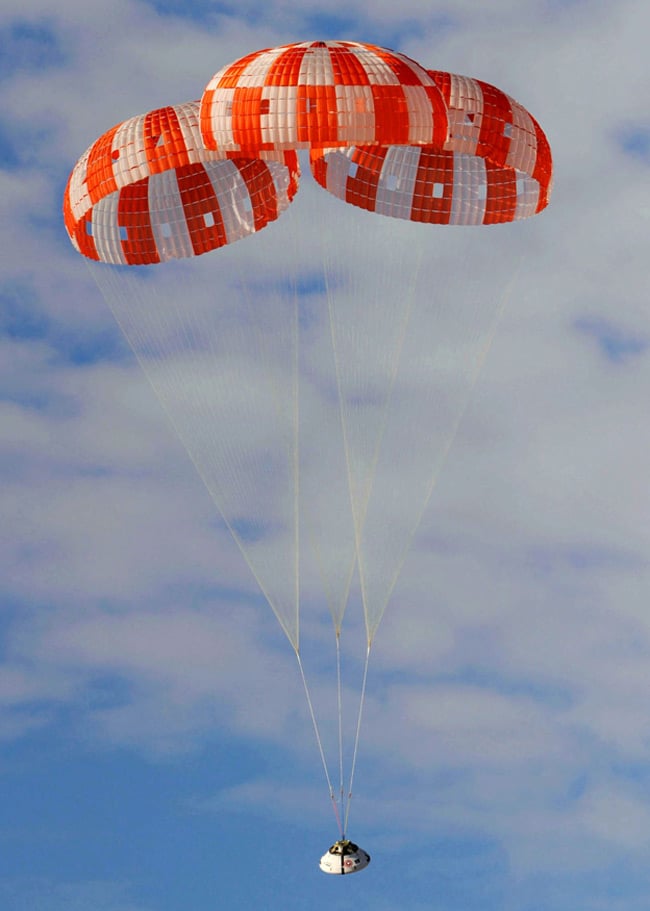
Parachute test of a dummy Orion capsule. Photo: NASA
...while Boeing's CST-100...
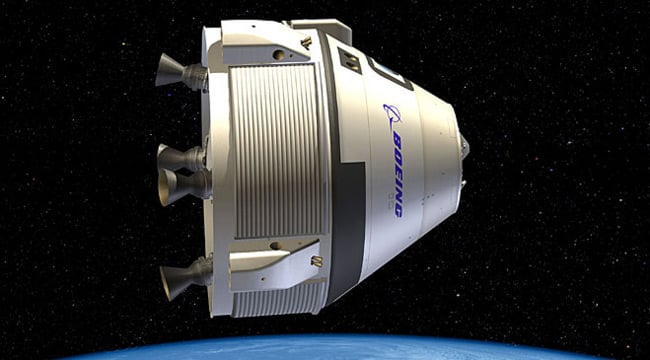
Artist's impression of the CST-100 in space. Pic: Boeing
...has added airbags to the mix:
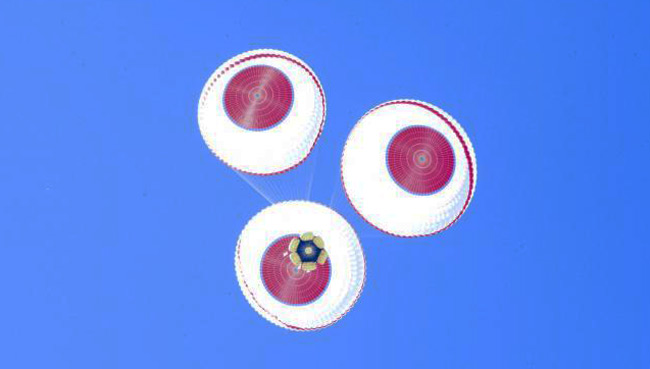
The CST-100 braced for bouncedown. Pic: Boeing
Down to Earth with a bump
It's tried-and-trusted stuff, but landings are generally hard on capsule occupants, despite the engineers' best efforts. Canadian Astronaut Chris Hadfield, who recently returned from the ISS aboard a Soyuz...
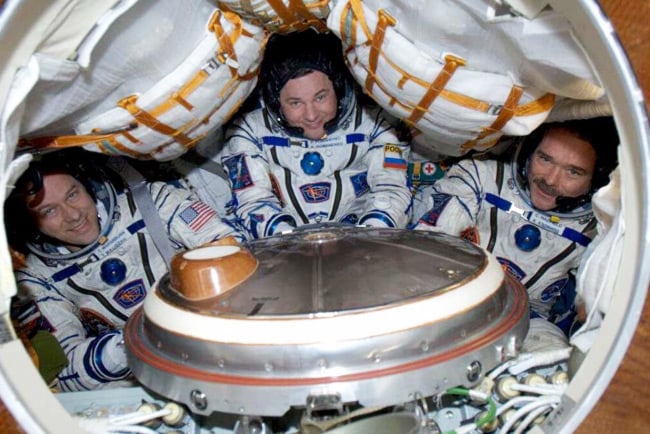
Tom Marshburn (L), Roman Romanenko (C) and Chris Hadfield (R) squeeze into a Russian Soyuz-TMA capsule shortly before their return to Earth in May 2013
...described touchdown as "just like a car crash". So, are there less bone-shaking alternatives to the parachute landing?
The only working alternative to date to 'chutes, rockets, airbags and recovery teams has been the US's space shuttle5, which ultimately proved a very expensive, and sometimes vulnerable, way to get people back on the ground.
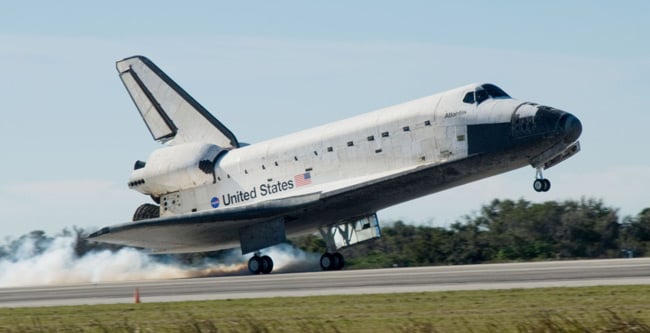
Space shuttle Atlantis lands at Kennedy Space Center in 2009. Pic: NASA
The future might be something like the manned version of the SpaceX Dragon...
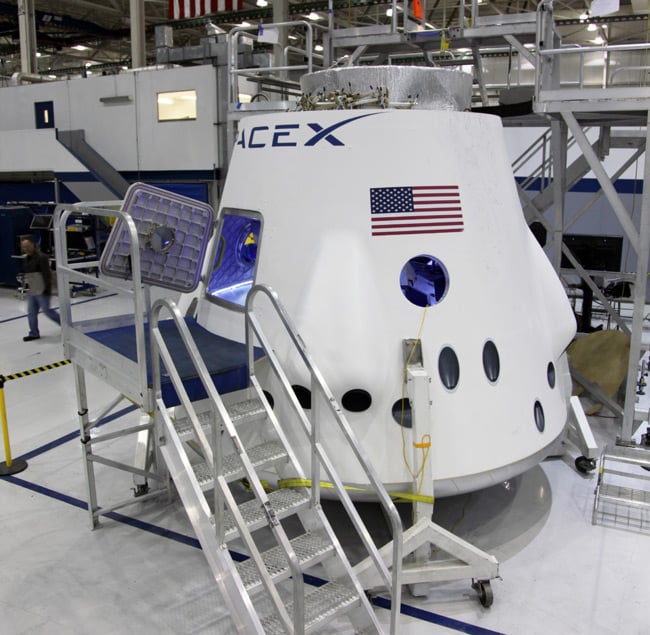
An engineering model of the 'Dragon Crew'. Photo: SpaceX
...offering hitherto unimagined levels of crew comfort:
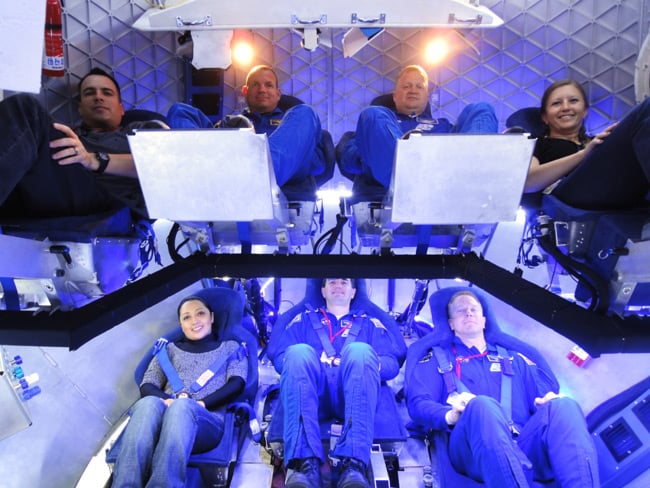
Right, fire up the widescreen TV and get the popcorn on the go. Pic: SpaceX
So far so good, but what about the "car crash" landing? Well, the McDonnell Douglas DC-X ("Delta Clipper Experimental") tested the concept of a single stage to Orbit (SSTO) vehicle which took off and landed vertically.
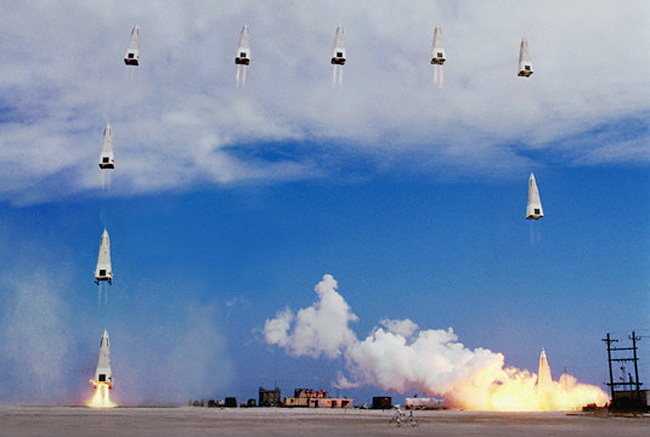
The DC-X
Private space company Blue Origin has been working on a reusable first-stage booster for its New Shepard suborbital system, where the capsule lifter returns vertically to the ground under thruster control.
SpaceX has been pursuing a similar idea, with its Grasshopper reusable rocket motor landing system.

The Grasshopper. Pic: SpaceX
It's conceivably a short step from vertical-landing boosters to capsules touching down under rocket thruster control, and if SpaceX's plans are anything to go by, that short step may one day become a giant leap.
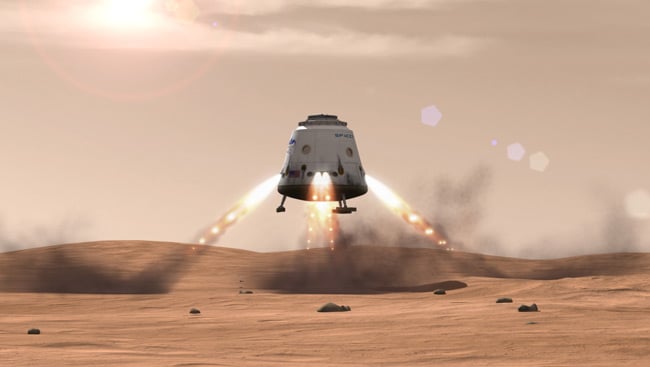
Destination Mars: The Dragon touches down on the Red Planet. Pic: SpaceX
In the short term, though, the idea of a rocket-powered vehicle landing6 may allow Earth orbit travellers the chance to unstrap their parachutes once and for all. We shall see. ®
Bootnotes
1 Strelka's post-mission activities included having a litter of six puppies. Nikita Khrushchev gave one to president Kennedy's daughter Caroline, a gesture which was rumoured to have been opposed by US spooks on the grounds the animal may have been packing a listening device.
2 There's more on spheres versus cones here.
3 To clarify, the first "in flight" fatality. Apparently, engineers increased the the thickness of the capsule's heat shield, meaning a bigger parachute was needed. Engineers didn't, however, increase the size of the parachute enclosure, and simply hammered the thing in with wooden mallets.
When the main 'chute failed to deploy, Komarov was able to manually release the reserve, but it tangled in the main parachute's drogue.
4 Europe, India and Japan are also eyeing reentry capsules for possible manned use.
5 And Russia's Buran, although that only achieved one unmanned flight.
6 Of course, the Apollo Lunar Module used a rocket engine to touch down, but it wouldn't have survived reentry into the Earth's atmosphere.